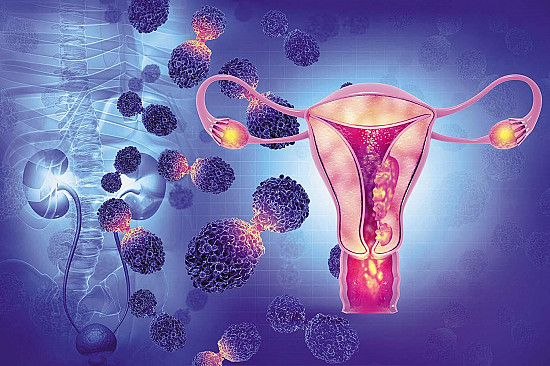The dangerous dismissal of women’s pain
We feel pain more intensely than men do, but we're also taken less seriously. Why?
- Reviewed by Toni Golen, MD, Editor in Chief, Harvard Women's Health Watch; Editorial Advisory Board Member, Harvard Health Publishing; Contributor

Just after sex, Vivian developed a headache so excruciating she went to urgent care. But the doctor immediately sent her home, telling her post-sex headaches are normal for midlife women like her. “It’s part of perimenopause,” he told Vivian.
The pain continued, though, ramping up the following day and causing her to vomit. Alarmed, Vivian decided to head to a hospital, where imaging scans revealed the true culprit: three aneurysms in her brain — weakened bulges in blood vessel walls that can lead to life-threatening bleeding. She was promptly scheduled for surgery.
“This is a vivid example of 'we’re not going to do any testing to look further’ and the problem turned out to be very serious,” says Samantha Meints, a pain psychologist in the Department of Anesthesiology, Perioperative, and Pain Medicine at Harvard-affiliated Brigham and Women’s Hospital. It’s also a phenomenon more relevant to women, whose pain is often minimized, dismissed, or undertreated by health care providers, according to a recent study.
Published in the August 13, 2024, issue of PNAS, the international analysis showed that clinicians treat women and men differently when they show up at a hospital with pain. Women wait an average of 30 minutes longer than men to be seen; we’re also less likely to receive pain relievers for the same complaints.
These striking findings don’t surprise Meints. “I see many women who share very similar experiences,” she says. “They’re told what they’re experiencing is normal, it’s part of aging, it’s because they’re peri- or postmenopausal. Everything is dismissed as 'You have a uterus and a vagina, and therefore you need to suck up your pain and deal with it.’”
Harsh history
Women’s pain has a long history of being belittled. The word “hysterical” originates from the Greek word hystera, meaning “womb,” with the term originally referring to a neurotic condition peculiar to women.
But even modern-day research reinforces this notion. A November 2023 study published in the Journal of Experimental Social Psychology highlighted a “gender-pain exaggeration bias” that leads some people to assume that women are more likely to overstate or dramatize their pain compared to men.
“This has likely happened since the beginning of time,” Meints says. “Women are viewed as hysterical; therefore their pain and health concerns are often pathologized in a psychiatric way.”
“Some of this is just due to social and cultural values,” Meints adds. “It’s a value for men to remain stoic in the face of pain or stress, while women are often more social and seek more support. The way they do that may be to share their difficult experiences, including pain.”
Pain provokers
Pain is the top reason American adults seek medical care, according to the CDC, and the number of people experiencing chronic pain is rising. A staggering 50 million people in the United States report experiencing pain daily, according to the 2024 PNAS study.
The most common types of pain among both sexes include back and neck pain, headaches, neuropathy (burning, shooting, or stabbing sensations, often from diabetes), and arthritis. But women are more likely than men to experience certain chronic pain ailments, including migraines, irritable bowel syndrome, fibromyalgia, and other conditions involving the joints, muscles, and bones.
“Almost everything shaping why we seek care is because of some pain or discomfort—whether that’s a rash, a headache, or belly pain,” Meints says. “Pain is our warning signal.”
Women’s greater burden
Yet women’s pain burden is heavier in more ways than one. Nearly a quarter of American women live with chronic pain — a higher proportion than men, according to the CDC.
The PNAS study also found that among patients reporting “nonspecific” pain (in which the cause isn’t immediately clear), women’s pain scores — a ranking from zero to 10 that escalates with pain intensity — are 10% less likely to be recorded by nurses than men’s after the patients first arrive at a hospital.
Women also face a stark physiological disadvantage: women and men perceive pain differently. “If you ask people to put their hand into ice-cold water, which elicits pain, men can leave it in longer than women,” Meints explains.
This pain gap, likely due to biological and hormonal differences between the sexes, proves shocking to many, says Robert Jamison, a pain psychologist at the Pain Management Center at Brigham and Women’s Hospital. “There’s al-ways this sense that women can go through childbirth, so they can withstand much worse pain than men,” Jamison says.
Take-charge strategies for effective pain careHow can women help ensure their pain is taken seriously? Harvard experts suggest these measures to rally appropriate medical treatment: Be straightforward. “Work closely with your provider to communicate what your expectations are and what you’re hoping to get out of your appointment,” says Samantha Meints, a pain psychologist at Brigham and Women’s Hospital. “Do you want answers? Just to feel better? Either of those are important in the realm of pain management.” State what you don’t want. Some clinicians still view patients with pain suspiciously, concerned they’re amplifying symptoms to receive opioid painkillers. But you can ease this concern. “Say explicitly 'I don’t want that — I just want an answer why I’m having this pain,’” Meints advises. “Or 'I want a blend of solutions to help me manage this.’” Do your homework. Research possible reasons for your pain on reputable websites such as Harvard Health Publishing. Bring this information to medical appointments and ask questions based on what you found. “Just like with diabetes or high blood pressure or other chronic illnesses, it’s important to learn as much as you can about it,” says Robert Jamison, a pain psychologist at Brigham and Women’s Hospital. Don’t settle. “Not all providers are ideal for dealing with pain,” Jamison says. “It’s important to feel good about who you’re working with. There needs to be a sense that you’re both working toward the same goal.” |
Factors influencing care
A diverse array of other factors likely also contribute to women being undertreated for pain, Harvard experts say.
Lack of objective pain measures. Unlike many other medical metrics, such as blood pressure or heart rate, there is no test that objectively measures pain. Instead, patients are asked to rank their pain level from zero to 10, so clinicians must rely on each patient’s report.
“We don’t have a painometer,” Jamison says. “There’s no way to evaluate whether someone’s pain is a 5, 8, or 2. Some people are more vocal about it, and others are more stoic.”
Uncertain diagnoses. “Physicians are trained to find a problem and fix it,” Jamison says. “But if they can’t find anything wrong, they tend to think it’s either a psychological or emotional problem and may dismiss it. It’s not war-ranted, but it still happens.”
Clinician bias. Medicine was once a male-dominated field, with a paternalistic approach that didn’t effectively understand painful ailments among women, Jamison says. But even female clinicians are prone to bias. Notably, the 2024 PNAS study found that women were undertreated for their pain regardless of the gender of the doctor or nurse attending to them.
“Males are not the only offenders,” Meints says. “This is a cultural phenomenon, deeply ingrained in our society. We in the medical field need to be better at honoring our patients, especially women, in their lived experience.”
Socialization. Because women get monthly menstrual periods starting in puberty, many of us have been told through the decades that living with pain is “normal.” As a result, some of us don’t feel we should speak up and “bother” others when our body hurts. But this approach can delay proper care.
“I have female patients tell me they feel they have to be the 'good’ patient, and even if a treatment didn’t work out, they feel they have to try it again,” Meints says. “They’re always trying to balance their lived experience with not wanting to be a burden, because their perception is that if they are, their care will be worse.”
Image: © izusek/Getty Images
About the Author

Maureen Salamon, Executive Editor, Harvard Women's Health Watch
About the Reviewer

Toni Golen, MD, Editor in Chief, Harvard Women's Health Watch; Editorial Advisory Board Member, Harvard Health Publishing; Contributor
Disclaimer:
As a service to our readers, Harvard Health Publishing provides access to our library of archived content. Please note the date of last review or update on all articles.
No content on this site, regardless of date, should ever be used as a substitute for direct medical advice from your doctor or other qualified clinician.
















